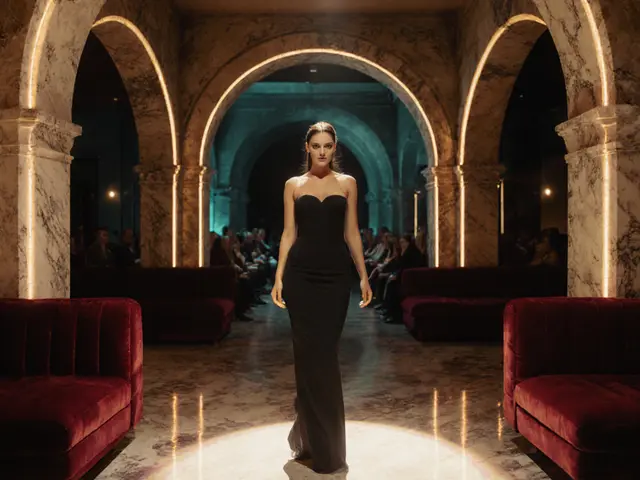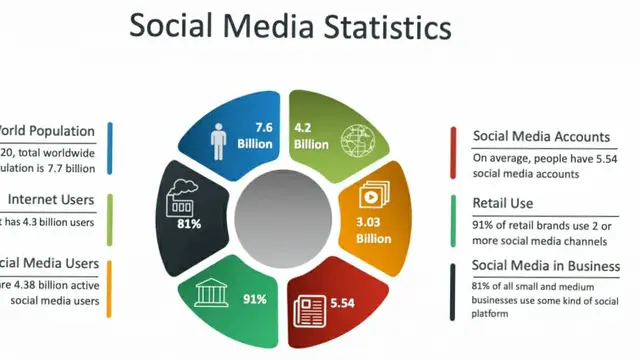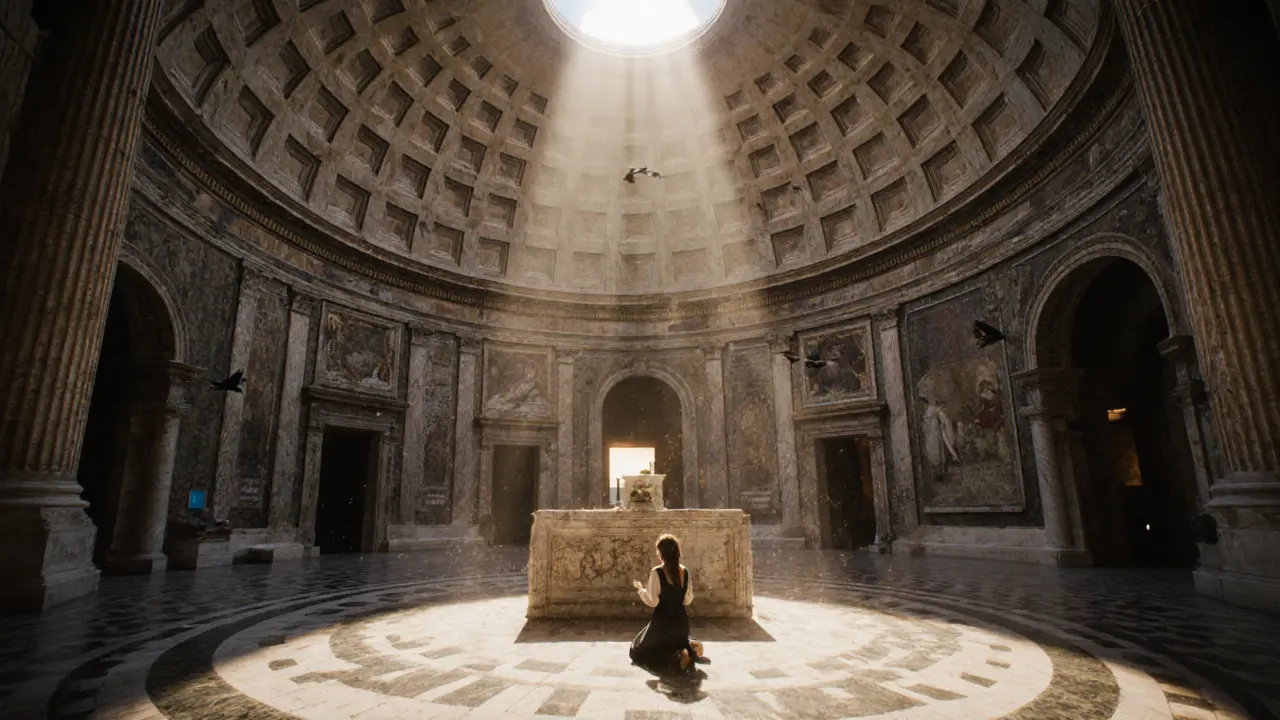
Walk through Rome and you’re not just stepping onto cobblestones-you’re walking over 2,700 years of history. The Colosseum isn’t just a ruin. The Pantheon isn’t just an old building. Every corner here holds a story that still breathes. If you think Rome is just about pizza and gelato, you’re missing the real pulse of the city. This isn’t a checklist of sights. It’s a guide to living Rome, from ancient rituals to modern espresso bars.
Start at the Colosseum-But Not Like a Tourist
The Colosseum draws crowds like a magnet. Most people snap a photo from outside, buy a ticket, and rush through. But if you want to feel what it was like when gladiators walked those halls, go early. Book a guided tour that includes the arena floor and underground tunnels. That’s where the animals and fighters waited before stepping into the light. You’ll stand where emperors once watched bloodsports, and hear how the floor was covered in sand to soak up blood. Modern archaeologists still find nails, bones, and even fragments of leather armor buried beneath. This isn’t just a monument. It’s a time capsule.
Afterward, walk 10 minutes to the Arch of Constantine. Look closely at the carvings. Some of them weren’t made for this arch. They were taken from older temples-reused like recycled building blocks. That’s Rome. Layers upon layers. Nothing is ever truly gone.
The Pantheon: Where Gods Still Dwell
Step inside the Pantheon and look up. That hole in the roof? It’s called the oculus. It’s the only source of natural light. Rain comes in. Birds fly through. Sunlight moves across the marble floor like a clock. This building was built in 126 AD. It’s still standing. No steel. No concrete reinforcement. Just Roman concrete-made with volcanic ash from Mount Vesuvius. That’s why it hasn’t crumbled. Modern scientists still study it to figure out how to make longer-lasting concrete today.
People still come here to pray. It’s a church now-Santa Maria ad Martyres. You’ll see couples lighting candles, locals whispering prayers, tourists silent in awe. It’s not a museum. It’s alive. And it’s free to enter.
Explore the Roman Forum-Not Just Ruins
The Roman Forum used to be the center of the empire. Think Wall Street, City Hall, and Times Square all rolled into one. Senators debated laws here. Triumphal parades marched through. Markets bustled under porticoes. Today, you’ll find broken columns, cracked floors, and moss-covered stones. But if you know where to look, you can still trace the paths.
Walk the Via Sacra-the Sacred Way. It’s the original road. The one Julius Caesar walked after winning battles. Stand where the Temple of Vesta once held the eternal flame. Look for the House of the Vestal Virgins. These women were priestesses who kept the fire burning. If it went out, they were punished. Their lives were controlled by law. One wrong move, and they were buried alive. That’s how seriously Rome took its rituals.
Don’t miss the Curia. That’s where the Senate met. You can still see the stone bench where Cicero stood and gave his speeches. The air here feels different. Quieter. Heavier.
Visit Trevi Fountain-At the Right Time
Trevi Fountain is beautiful. But if you go at noon on a Saturday, you’ll be shoulder to shoulder with 500 other people trying to toss a coin. The trick? Go before sunrise. Or after 9 p.m. The lights glow on the water. The statues look like they’re moving. You’ll hear the splash of coins, the murmur of quiet lovers, the distant hum of a motor scooter.
And yes, you still throw a coin over your shoulder with your right hand. Tradition says it ensures you’ll return to Rome. Millions of euros worth of coins are pulled out every year. The city uses the money to fund soup kitchens. So your coin doesn’t just make a wish-it feeds someone.
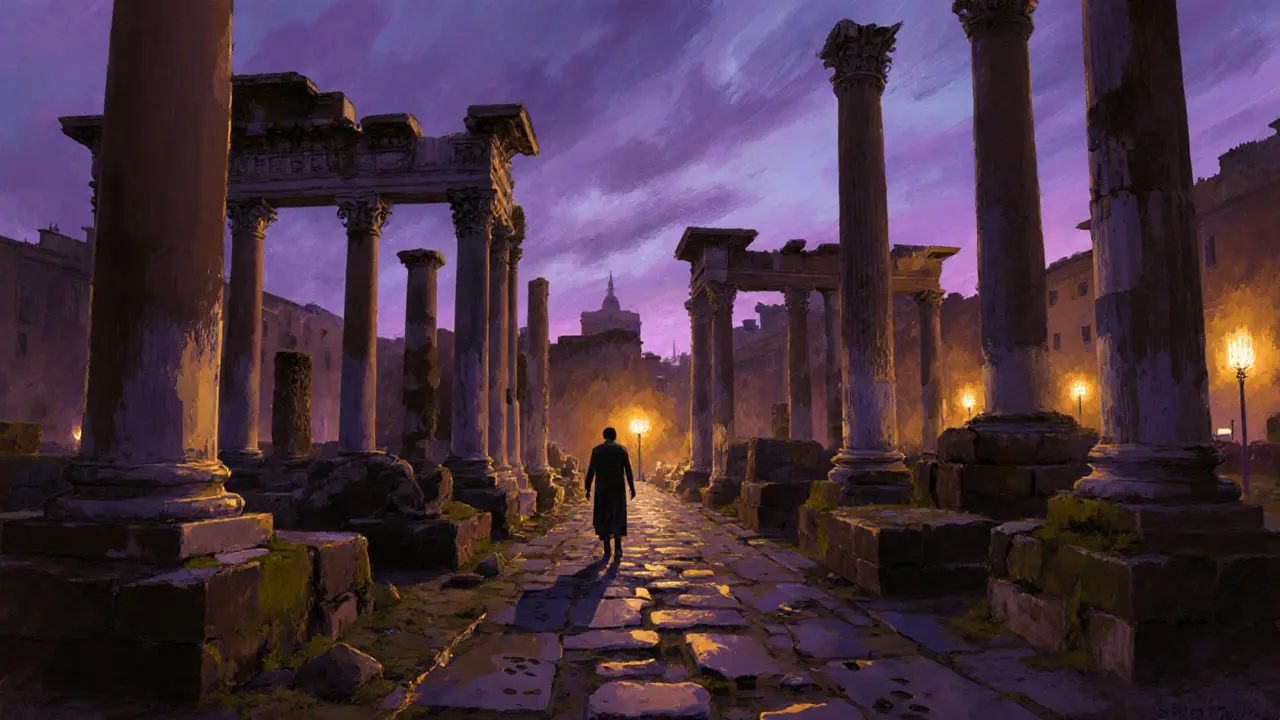
Get Lost in Trastevere
Trastevere isn’t on most tourist maps. But it’s where Romans live. Narrow streets, laundry hanging between buildings, kids playing soccer with a deflated ball. The smell of garlic and basil drifts from open kitchen windows.
Find a tiny trattoria with no sign. Just a chalkboard outside. Sit at the counter. Order spaghetti alla carbonara. No cream. No peas. Just eggs, cheese, pancetta, and black pepper. The owner will stare at you if you ask for Parmesan on top. That’s not how it’s done here.
At night, the piazzas fill with people drinking Aperol spritzes. Not in fancy bars. On benches. With friends. No one rushes. That’s the rhythm of Rome.
See the Vatican-But Skip the Lines
The Vatican Museums are overwhelming. 1,400 rooms. 50,000 artworks. Michelangelo’s ceiling alone takes hours to appreciate. But here’s the secret: book a late-night opening. Every Friday, the museums stay open until 11 p.m. The crowds thin. The lights are softer. You can stand alone in front of the Laocoön or the Apollo Belvedere without a single selfie stick in your view.
And don’t just rush to the Sistine Chapel. Walk through the Raphael Rooms first. These were the Pope’s private apartments. The walls are covered in frescoes that tell stories from the Bible and ancient philosophy. Raphael painted them when he was in his 20s. He died at 37. You can still see the brushstrokes-quick, confident, alive.
Find Quiet Corners in the Gardens of Villa Borghese
Most people think of Rome as loud, busy, and crowded. But the city has pockets of silence. The gardens of Villa Borghese are one. Rent a bike. Ride past fountains shaped like dolphins. Stop by the Galleria Borghese-book ahead, it’s tiny. Inside, Bernini’s David looks like he’s about to move. His muscles tense. His face twisted in effort. It’s not marble. It’s motion frozen.
Find a bench under a cypress tree. Watch the light change. A woman reads a book. An old man feeds pigeons. A teenager plays guitar. No one is rushing. This is the Rome Romans know.
Drink Espresso Like a Local
Don’t sit down at a café near the Colosseum and order a cappuccino after 11 a.m. Locals don’t do that. Espresso is for standing at the bar. Quick. Strong. No sugar unless you ask. If you want milk, it’s caffè latte-but only in the morning.
Find a tiny bar with a line of locals. Order un caffè. Pay at the register first. Then hand your receipt to the barista. They’ll nod. You’ll get a tiny cup. Drink it in two sips. Feel the heat. Taste the bitterness. Then walk out. That’s how it’s done.
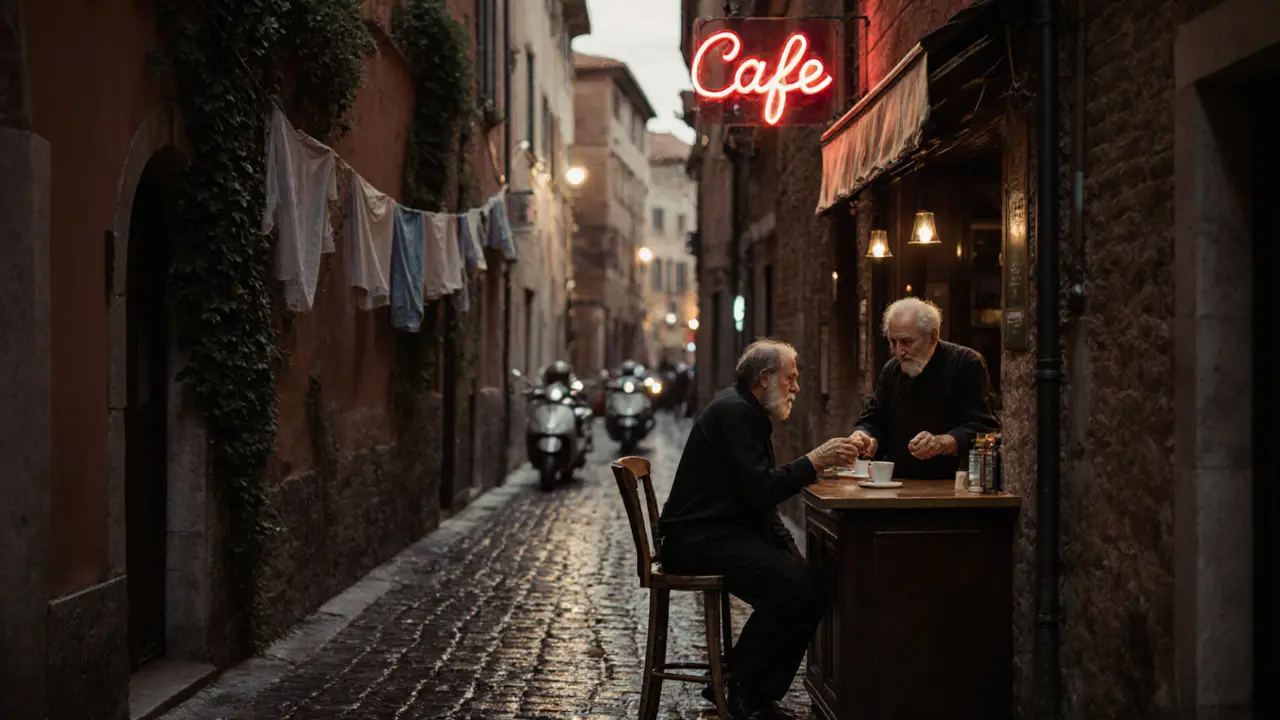
Go to the Market-Testaccio
Every Saturday, Testaccio Market fills with farmers, butchers, and cheese makers. You’ll find pecorino cheese aged for two years. Wild boar salami. Fresh figs still warm from the sun. Talk to the vendors. They’ll let you taste. One man will hand you a slice of prosciutto di cinghiale and say, "This is what my grandfather made. I still use his knife."
Buy a wedge of cheese, a loaf of bread, and a bottle of wine. Sit on the steps of the Pyramid of Cestius. Watch the sun set behind the ancient tomb. Eat slowly. Let the flavors stay with you.
Walk the Appian Way-On Foot
The Appian Way was the road that connected Rome to the south. Built in 312 BC. Still intact in places. You can walk it without cars. Ancient stones, olive trees, crumbling tombs. You’ll pass the Catacombs of San Callisto-where early Christians buried their dead. The walls are carved with symbols: fish, doves, anchors. Quiet. Sacred.
At the end of the road, you’ll find a small chapel with a single candle. No sign. No tourists. Just the echo of footsteps on 2,300-year-old stone.
When to Go
Spring (April-June) and fall (September-October) are perfect. The weather is mild. The crowds are thinner. Summer is hot. Winter is quiet-some places close, but the city feels more real. Snow dusts the Colosseum. The fountains freeze at the edges. Locals wear scarves and drink hot chocolate in tiny cafes. It’s not postcard Rome. It’s deeper.
Final Thought
Rome doesn’t ask you to see everything. It asks you to feel something. The weight of history. The warmth of a stranger offering you a taste of cheese. The silence inside the Pantheon when the sun hits the oculus just right. You don’t need to check off every site. Just find one moment that stays with you. That’s the real Rome.
What is the best time of year to visit Rome?
Spring (April to June) and fall (September to October) are ideal. The weather is pleasant, crowds are smaller, and most attractions are fully open. Summer is hot and packed, while winter is quiet-some sites close, but the city feels more authentic, with fewer tourists and a peaceful atmosphere.
Can I visit the Vatican Museums without a ticket?
No, you need a ticket to enter the Vatican Museums and the Sistine Chapel. But you can enter St. Peter’s Basilica for free. Book tickets online in advance to skip long lines. For a quieter experience, choose the Friday late-night opening (until 11 p.m.), when crowds are much thinner.
Is it safe to walk around Rome at night?
Yes, most central areas like Trastevere, the historic center, and near the Tiber River are safe at night. Stick to well-lit streets and avoid isolated parks or alleys. Pickpocketing can happen in crowded tourist spots, so keep your belongings close. Locals often walk home late, so if you’re unsure, follow their lead.
What should I never do in Rome?
Don’t order cappuccino after 11 a.m.-locals see it as a breakfast drink. Don’t ask for Parmesan on pasta dishes like carbonara or cacio e pepe-it’s considered a culinary crime. Don’t touch ancient statues or sit on ruins. And never assume Roman food is the same as what you get abroad. Authentic Roman cuisine is simple, regional, and strict about tradition.
How much time do I need to see Rome properly?
Three days is the minimum to see the highlights. But if you want to feel the rhythm of the city-eat at local markets, wander Trastevere, sit in quiet gardens, and explore lesser-known ruins-you’ll need at least five to seven days. Rome rewards slow travel. The more time you give it, the more it reveals.
Next time you’re in Rome, skip the bus tours. Walk. Listen. Taste. Let the city surprise you.

